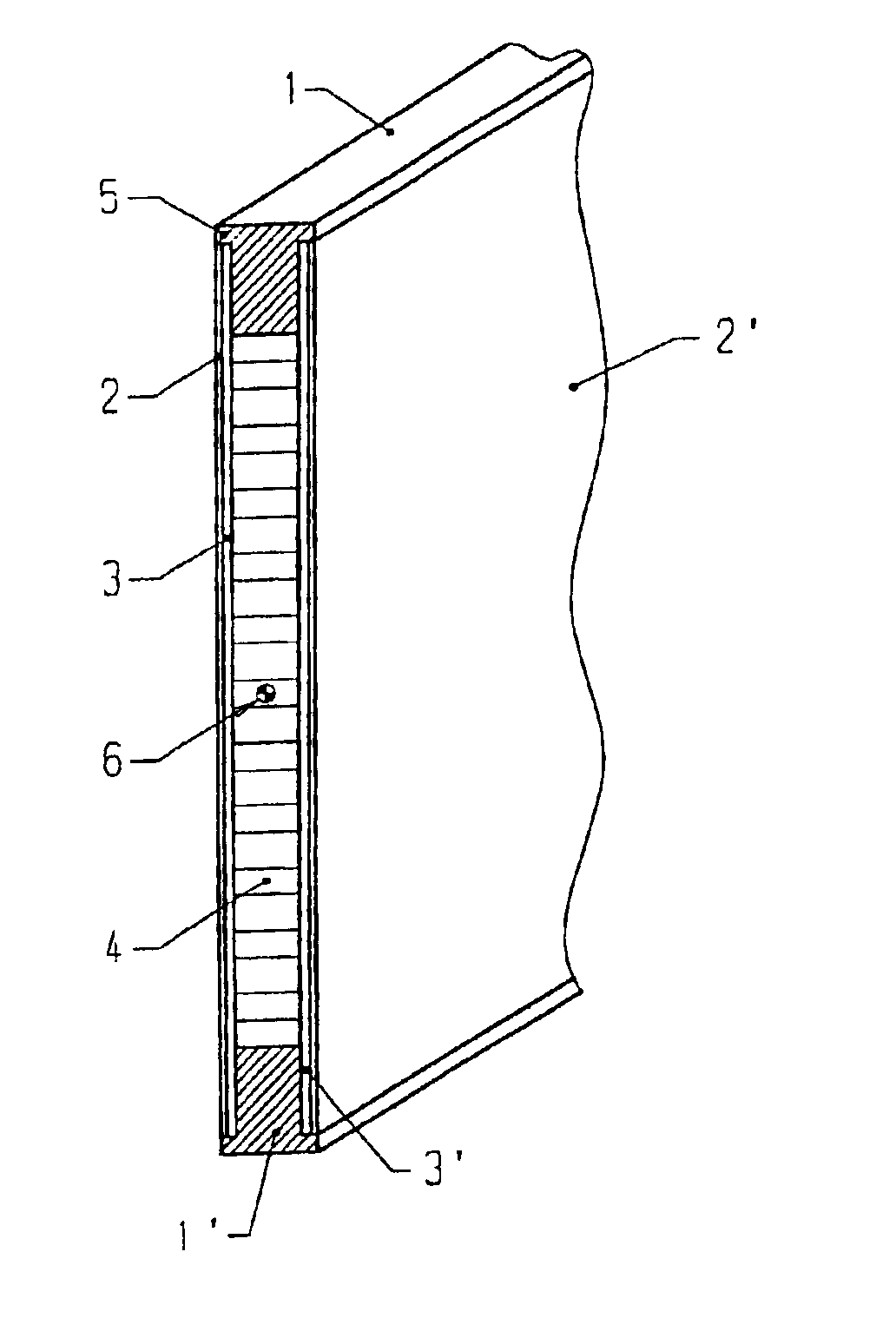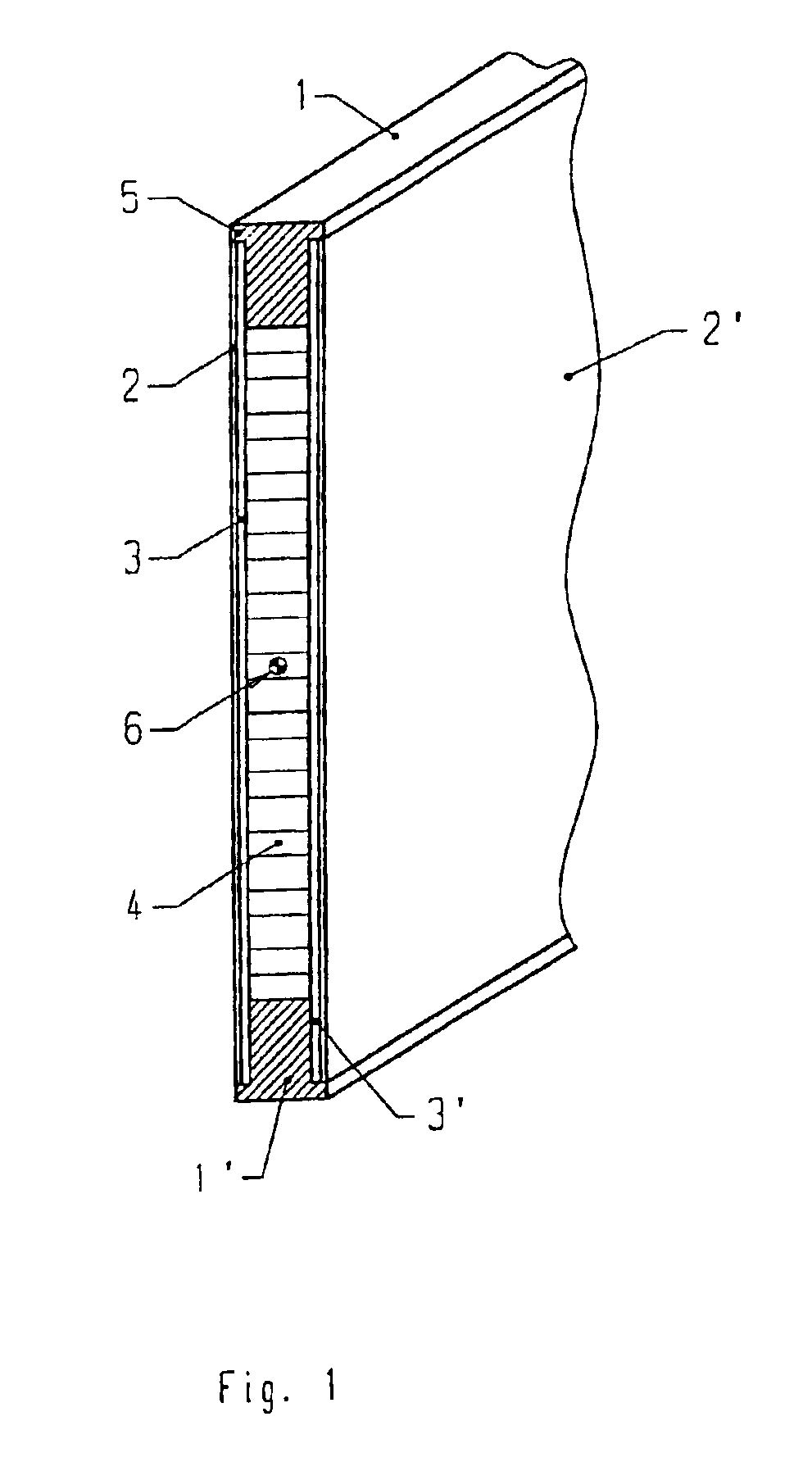Support element for a heddle frame
a technology of supporting elements and heddle frames, which is applied in the direction of weaving, textiles and papermaking, other shedding mechanisms, etc., can solve the problems of over-proportional increasing stresses of heddle frames, and many compromises must be made relative, and without success
- Summary
- Abstract
- Description
- Claims
- Application Information
AI Technical Summary
Benefits of technology
Problems solved by technology
Method used
Image
Examples
Embodiment Construction
[0023]The support bar for a heddle frame shown in FIG. 1 has fiber-reinforced plastic profiled pieces 1 and 1′ attached along edges of the frame parallel to the central longitudinal axis 6 of the heddle frame, and they contribute through their material characteristics and their positioning to a very high geometrical moment of inertia in the direction of the central axis of the support bar between and parallel to the two profiled pieces.
[0024]Side pieces 2 and 2′ of the support bar, as well as the fiber structures 3 and 3′, are illustrated in the drawing sufficientiy thick for the purpose of clarification. However, both are in reality only 0.7 mm thick, at the most. The rectangular core 4 of the support bar, which serves to stiffen the side pieces, is preferably of honeycomb-shaped material. There can be seen as well the small stop element 5 formed along opposing edges of the side pieces. Fiber structures 3 and 3′, oriented in the longitudinal direction of the heddle bar, serve to re...
PUM
 Login to View More
Login to View More Abstract
Description
Claims
Application Information
 Login to View More
Login to View More - R&D
- Intellectual Property
- Life Sciences
- Materials
- Tech Scout
- Unparalleled Data Quality
- Higher Quality Content
- 60% Fewer Hallucinations
Browse by: Latest US Patents, China's latest patents, Technical Efficacy Thesaurus, Application Domain, Technology Topic, Popular Technical Reports.
© 2025 PatSnap. All rights reserved.Legal|Privacy policy|Modern Slavery Act Transparency Statement|Sitemap|About US| Contact US: help@patsnap.com


